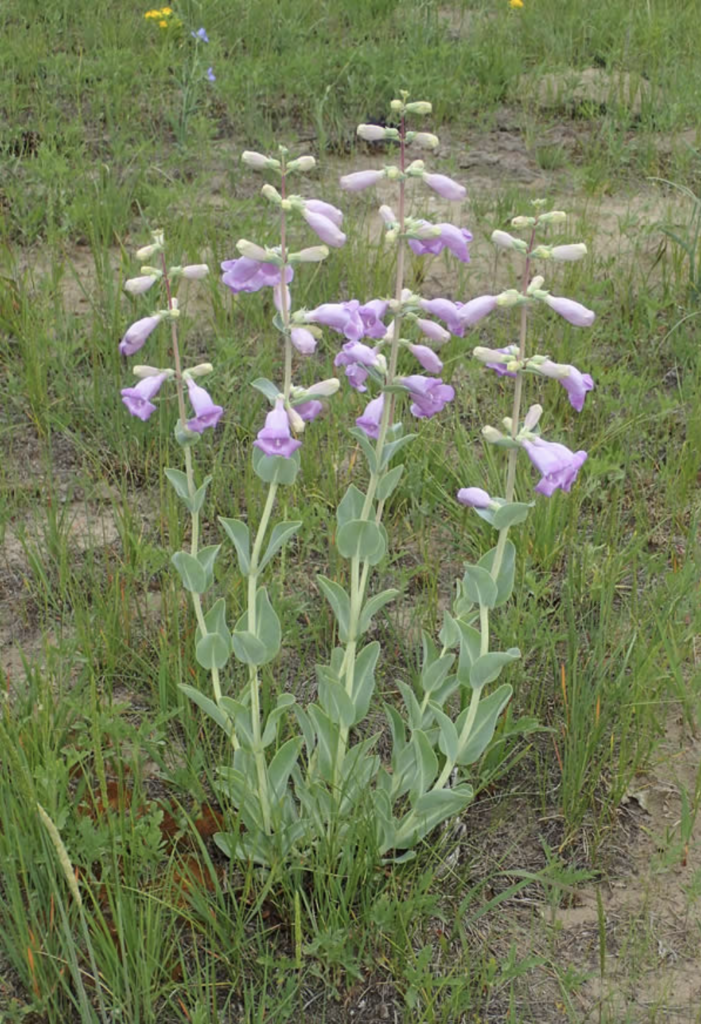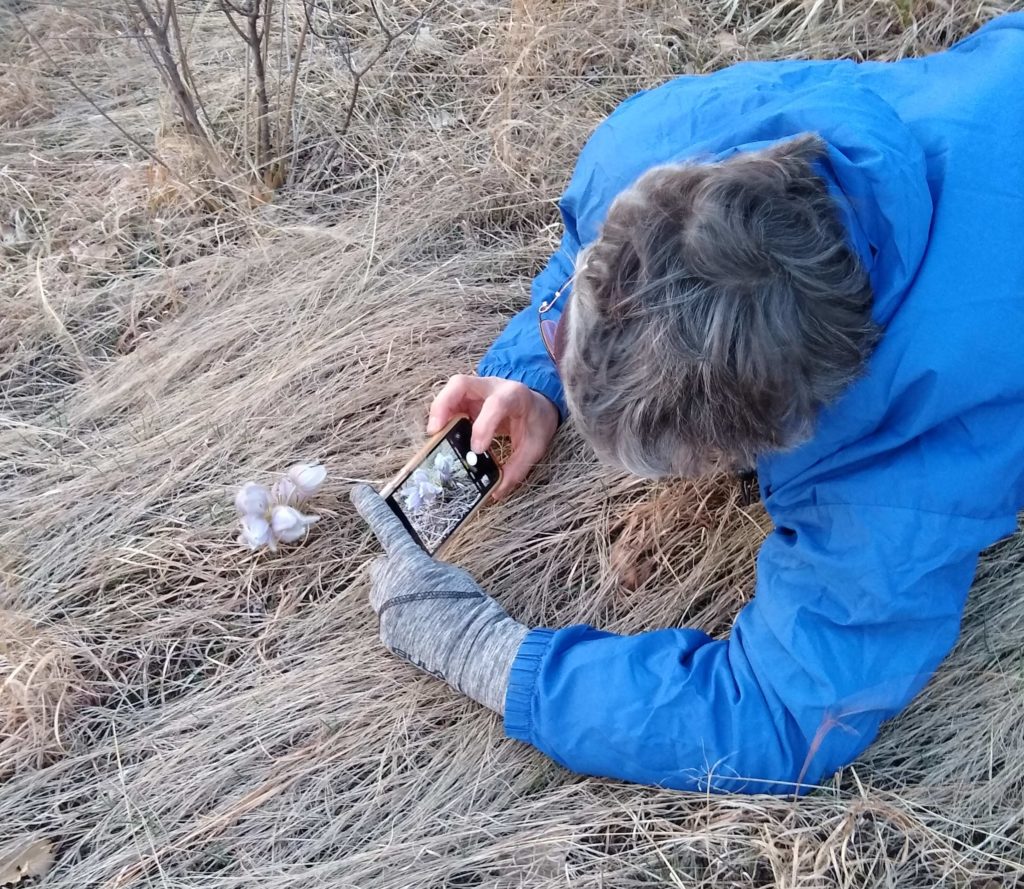Stepping onto a prairie in springtime is a sensory delight. The air is clean, the vistas wide, the sounds of birds come from the farthest corners and around each bend in the trail a new plant is coming to life. Winter has passed, (we hope!) and the season turns to longer daylength, heat and growth. Freedom in the form of shorts and t-shirts are a welcome relief from the encumbrances of coats, hats, boots and mittens….Happiness abounds!
The flowers of the prairie in spring are an especially welcome delight. Set amid a backdrop of lush, fresh green, they sparkle like precious jewels. They start small and close to the ground, but grow taller and thinner as the season progresses.

One of the first to blossom is the soft and lovely Pasque flower (Anemone patens).
A harbinger of spring, this plant often emerges while there is still snow on the ground. The long silky hairs on the stems help to insulate it from cold temperatures. Early emerging insects, like the large mining bee, welcome it as an early food source.

Another early spring bloomer is the delicate Bird’s foot violet (Viola pedata). These plants are somewhat non-descript until you are right on top of them. Growing in loose colonies, they look like a carpet of pale purple. These plants are of particular importance to the family of Frittilary butterflies as host plant for eggs and caterpillars.

The cast of prairie characters continues and gets a little taller with the arrival of Cream Indigo (Baptisia bracteata) also called Cream False Indigo or Plains Wild Indigo. A compact, mounded legume, this plant has luscious long fronds of creamy white blossoms that are an essential flower for queen bumblebees emerging from winter hibernation. It is also a host plant for several butterfly species.
Due to loss of habitat to agriculture this plant is a species of special concern in MN.

The spires of Lupine (Lupinus perennis) are showy and hard to miss. This plant is an excellent indicator of dry, sandy soils. The blossoms are beautiful to look at — they can make you stop to catch your breath! Their distinctive palm shaped leaves are fed upon by a number of butterfly caterpillars including the rare Karner Blue butterfly.

Moving further into the season is the always distinguished Large Beardtongue (Penstemon grandiflorus). These stunning lavender-pink blossoms are large and somewhat short lived.
When you see them, stop to admire their graceful stature!
Also a sandy soil lover, this plant is popular with hummingbirds and a necessary host plant for several species of Checkerspot butterflies.
The blossoms on a prairie are like works of fine art
The lighting, colors, and textures change daily, never to be repeated.They rapidly produce blossoms for seeding, and also help feed pollinators. That we can experience this profusion of beauty is indeed a miracle.
These and other lovely blooms can all be found at our Stagecoach and Tallgrass Prairies. Give yourself the gift of time on the prairie and you will walk away fulfilled and calm having witnessed this broad landscape painted by our mysterious, magical natural world.

Attend an upcoming event with Lynette as your guide! Visit our events page for more information.